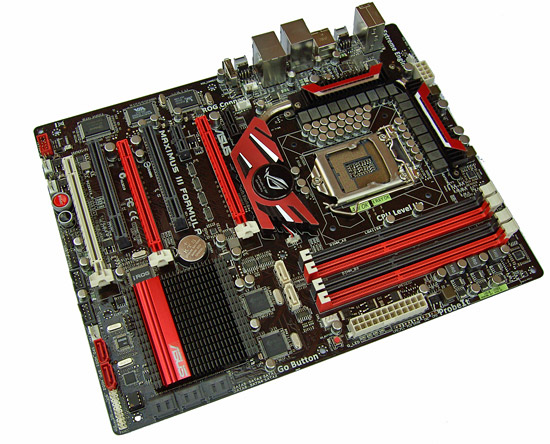P55 Overclocking Showdown - ASUS, Gigabyte, and EVGA at the OC Corral (Page 6 Updated)
by Rajinder Gill on November 6, 2009 12:00 PM EST- Posted in
- Motherboards
Final Words
We are going to keep this simple. Hold our feet to the fire and we’ll tell you that of all the boards we tested, the most consistent performer was the $230 EVGA P55 FTW SLI E657 (using a Tyco AMP Socket). At its price point, there’s nothing available on the P55 platform that truly beats it for raw overclocking capabilities. Otherwise, the ASUS Maximus III Formula was high on our list in early testing as a great overall choice until we started experiencing the socket burn problems that really plagued our review samples. We have a retail board with the revised Foxconn socket in testing now and will provide updates shortly.
The Gigabyte GA-P55-UD6 is a very good choice in the top end P55 market for those looking for a balance of features along with great overclocking abilities. We are not thrilled with the six memory sockets as it just seems to be a marketing feature. We just cannot recommend the EVGA P55 Classified 200 E659 motherboard due to its price point near $340 regardless of its capabilities, features, or even looks. Unfortunately, any jubilation for a platform winner ends here until we know the exact cause of the issues we experienced on motherboards using the Foxconn 1156 sockets.
Behind the scenes, Foxconn admitted there was a socket update in June that was approved by Intel with planned implementation in the August time period. We have the test report papers and the revised Foxconn socket passed all of Intel’s stress tests before it was placed into production, which raises questions as to why there has been problems post retail release. Intel has only commented that they believe the problems can occur with improper force being placed on the socket. However, that does not explain the lack of pad contacts with a retail CPU cooler and new processor that we have experienced in several situations.

Whether the reported socket issues were down to poor contact, improper clamp force, or a limitation in design (limited tolerances beyond stock specifications) is unknown to us at present. We’ve spoken to a few board engineers and nobody has been able or willing to put a firm conclusion on the matter, at least on the record.
Off record, early results from failed boards or user reports appeared to be a serious enough problem that most of the manufacturers moved to the Lotes or Tyco AMP sockets in their high-end boards or others for that matter. We have to stress that our problems and those of others we have dealt with directly occurred under extreme overclocking conditions. Out on the forums, we’ve heard of one reported case where a user claims a failure has happened at stock operating frequency using an Intel air cooler. We also have verification of a Lotes socket failing recently, which does put a new light on this problem.
Socket issues aside, the margin of overclocking variance shown in our benchmark results are very small. We can assure you that any of these clock speed differences won’t show up when these boards are used with air or water cooling solutions. And even with the socket burn out problems, we just have not had any direct experiences with failures after close to nine thousand test hours on over a dozen retail boards with air or water cooling at this point. Based on that testing, we still feel confident about the P55 platform.
For the sub-zero benchmarking crowd, you’re not likely to upstage socket 1366 based processors by using any kind of budget purchasing angle with the P55 platform. Just be aware and realistic of what this platform is designed to do before you commit to purchase it with thoughts of setting overclocking records in mind.
Gallery of Additional Performance Results-































52 Comments
View All Comments
michael19 - Friday, November 6, 2009 - link
"Our test sample arrived with the revised Foxconn socket.."how can we tell if we have the revised foxconn socket as opposed to the defective version?
Rajinder Gill - Friday, November 6, 2009 - link
No idea at this point. Only Foxconn seem to know what it is they changed in the June revision.michael19 - Friday, November 6, 2009 - link
Or perhaps a side by side picture would show us some noticeable visual differences, possibly..cmdrdredd - Friday, November 6, 2009 - link
How come the Asus board is left out of the final few notes and tests? It's in the 3DMark and SuperPi scores etc, but there's individual pages dedicated to the other boards...Samus - Monday, November 9, 2009 - link
probably because it failed mid-testingAstroGuardian - Wednesday, November 11, 2009 - link
It's socket burned as a result of not so extreme overclock. It's not ASUS fault, it's Foxconn's faulty socketRajinder Gill - Friday, November 6, 2009 - link
Hi,The ASUS board died before I could complete the 750 retail CPU testing. We just got a new board last week so I will possibly update when that arrives here.
later
Raja
cmdrdredd - Friday, November 6, 2009 - link
lol well, a dead board spells trouble anyway IMO. Unless something drastic was done to it (extreme overclock for example).michael19 - Friday, November 6, 2009 - link
OK, thank you. Would the numbers on the backplate give us any indication? Is there any consistent difference in the numbers printed on the backplate from the old burnt out sockets to the new ones you have now?Corsairs - Friday, November 6, 2009 - link
I'd love to see this board compared to the group reviewed here.